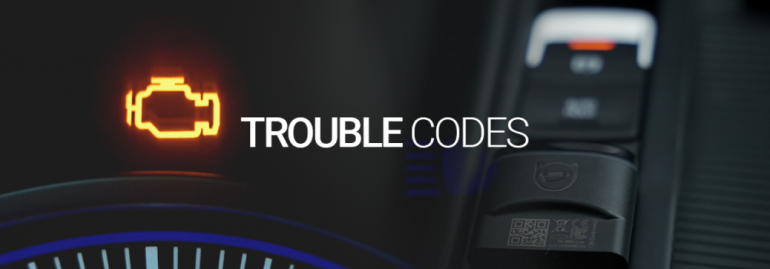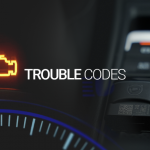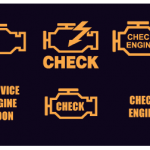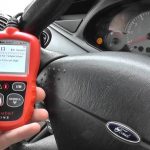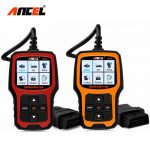
If you are experiencing problems with your vehicle, you might have seen the following car trouble codes: P0300, P0102, and P037. What do they mean? And how can you fix them? Keep reading to learn how to do it! Once you understand the meaning of these codes, you can go ahead and troubleshoot the problem yourself! Just remember to keep a car manual handy. And if you’re still unsure, check out these tips:
P0300
The P0300 car trouble code indicates a problem with the engine’s cylinders. This type of problem can damage the catalytic converter. These codes are a general indication of engine trouble and need to be investigated thoroughly. Using a car diagnostic tool, such as an OBD-II code reader, will help you to determine the exact problem causing the problem. This trouble code is common and can occur in many car models.
Typically, the engine misfires. A misfire can damage other parts of the car or the engine. If you notice this code, immediately take your car to a mechanic. If the engine is running properly, there’s no need to tow it. A more serious problem is misfired ignition, which will require a replacement of the catalytic converter. Misfires are dangerous, as they can ruin the engine and catalytic converter.
Misfire – Another common cause of this code is an improper fuel supply. Improper fuel can cause the timing to be off and lead to a misfire. An improperly functioning ignition coil or timing belt can also lead to a P0300 code. A faulty spark plug or crankshaft sensor could also be causing the problem. Compression loss is the least common cause of the P0300 car trouble code.
Misfire – A misfire occurs when the combustion process inside the cylinder has not been completed. This problem can result in a misfire and a jerking action from the engine. Misfires can also be caused by an incorrect base ignition timing adjustment. It is a good idea to have a professional check the code with the help of an OBD-II scanner. If the code does not seem to be related to the misfire, you can call a mechanic.
Faulty ignition: If the P0300 code is causing your engine to stall or perform poorly, your car needs immediate repair. Your check engine control lamp may also light up. A number of other problems could be causing the problem, including a faulty PCM module or a plugged exhaust gas recirculation valve. Regardless of the cause, it is important to address the problem immediately to avoid more serious damage.
P0106
A general powertrain trouble code, P0106 can occur when the MAP sensor’s output voltage is incorrect for the car’s ECU. This error can also be caused by a vacuum leak in the air intake system or the intake hose. Regardless of the cause of the error, a professional should always check the original manufacturer’s diagnostic procedures before attempting to repair the vehicle. Listed below are some common P0106 car trouble codes and what they mean.
The MAP sensor is a component of the power control module (PCM) that monitors the air-to-fuel ratio of the engine. If the air-to-fuel ratio is off, there can be misfires or engine sluggishness. In addition, the manifold pressure naturally changes with throttle position, which can lead to problems. A problem with this sensor can also result in P0106 or P0107 car trouble codes.
If the MAP sensor is malfunctioning, you should seek immediate service. A qualified technician can quickly diagnose the problem and fix the problem. A malfunction in this sensor can cause high fuel consumption, rough operation, difficulty starting, and even backfiring. If you continue to operate the vehicle without addressing the problem, you may do more damage than good. Fortunately, the OBD-II system can be reset so you can continue to operate the vehicle.
A P0106 car error code is a critical issue, as it can cause major damage to the engine and other components. If you have the P0106 error code, you should take immediate action. Following the troubleshooting steps outlined above will help you resolve the problem. In the meantime, you should schedule a visit with a professional mechanic. In case the problem persists, a diagnostic fee will be charged.
Another common cause of P0106 car trouble codes is a faulty MAP sensor. The MAP sensor can become weak after about 150,000 miles, and may be physically damaged or worn. The sensor may also malfunction due to fatigue or a poor electrical ground. If the trouble continues, you may have to get your vehicle diagnosed by a professional. And remember, it’s possible to repair the problem yourself, but if you’re not confident with your knowledge of auto mechanics, it’s best to call a professional.
P0102
A common cause of the P0102 car trouble code is a faulty mass air flow sensor. This sensor measures the amount of air in the engine and is responsible for maintaining a correct air-to-fuel ratio. If the sensor’s voltage output is too low, it indicates that it’s not working correctly or is defective. If you see this trouble code, it’s time to replace the sensor. However, before you start troubleshooting your vehicle, you should be aware of some common causes of this code.
The first thing to do when you get a P0102 car trouble code is to check the car’s diagnostic system. The problem can be easy to diagnose using an online automotive guide. For more comprehensive guidance, you can purchase a Haynes or Chilton car repair manual. However, because each vehicle is different, it’s important to consult the manufacturer’s repair information to ensure the correct diagnosis. For the most part, it’s best to hire a mechanic if you’re not able to figure out the problem yourself.
Another common problem associated with a P0102 car trouble code is a rough idle. While this symptom may not be obvious, it can be alarming and cause you to panic. If your vehicle is experiencing a rough idle, it could be many different things, but it’s not necessarily a P0102 car trouble code. It could be something as simple as a dirty MAF sensor. A dirty sensor will make the ECU unable to gauge airflow properly.
If you see a P0102 car trouble code on your vehicle, it’s likely that the Mass Airflow Sensor (MAF) is malfunctioning. A low voltage signal will be sent to the engine control module to determine how much fuel is needed to mix with air in the combustion chamber. A faulty air filter may also be preventing the proper airflow to the MAF sensor. If your car experiences this issue, you should replace it as soon as possible.
A vacuum in the intake manifold may cause your car to lose power and idle poorly. This can also result in a rough start and a loss of power when you accelerate. If your P0102 car trouble code is causing these symptoms, you should take it to a certified mechanic for further investigation. The mechanic should have a diagnostic tool that can read the code and diagnose the problem. Then, you can get your car running smoothly again.
P037
A P037 car trouble code means that your downstream oxygen sensor system is faulty. A repair shop can pinpoint the problem quickly with the use of a FIXD sensor and App. They will analyze the engine data to determine the source of the trouble code. If your mechanic can’t figure it out, call RepairPal to get your car diagnosed. The solutions to the problems associated with this code are clear. In most cases, a simple diagnostic procedure can resolve the issue without having to spend a fortune.
Several causes of the P037 car trouble code include burnt wiring and faulty oxygen sensors. Burnt wiring is a common cause, as can the exhaust system being very hot. Likewise, blown fuses in the heater control circuit can cause the sensor to fail to give a correct reading. A faulty battery input connector can also lead to this code. However, a professional mechanic will be able to correctly diagnose the problem and repair it quickly.
A repair can be very simple or extremely complicated, depending on the vehicle model. If you notice that the Check Engine Light is illuminated, this means that the error is in the O2 sensor heater control circuit. A technician can use a code reader to connect to this port and diagnose the problem. A qualified technician can also perform this service for free at an Advance Auto Parts store. If you don’t have the tools or the time, don’t fret – code scanning at Advance Auto Parts is free and simple!
A repaired or replaced HO2S sensor can solve the problem. Depending on the car model, the replacement of Bank 1, 2 HO2S can help you restore the performance of the engine. However, if the problem persists, you may need to take your vehicle to a repair shop. If this is not the case, you should try replacing a bad or malfunctioning HO2S sensor. If you can’t do it yourself, you can also consult the service manual for more detailed information.


